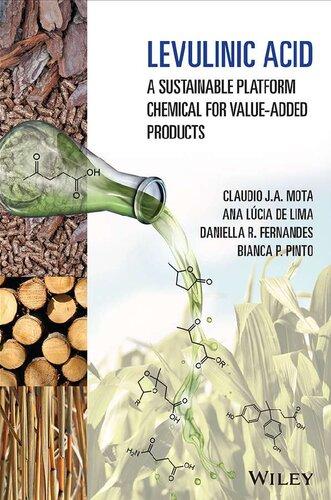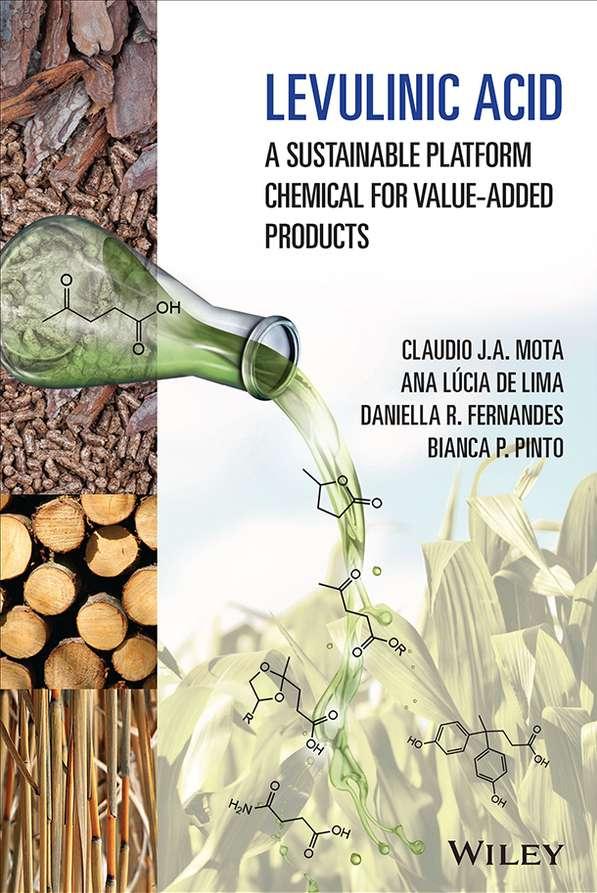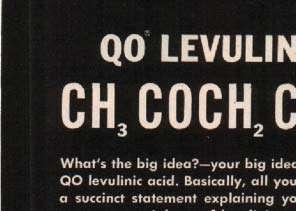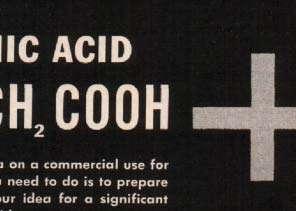https://ebookmass.com/product/levulinic-acid-a-sustainableplatform-chemical-for-value-added-products-claudio-j-a-mota/
Instant digital products (PDF, ePub, MOBI) ready for you
Download now and discover formats that fit your needs...
Depolymerization of Lignin to Produce Value Added Chemicals Pratima Bajpai
https://ebookmass.com/product/depolymerization-of-lignin-to-producevalue-added-chemicals-pratima-bajpai/ ebookmass.com
Platform Chemical Biorefinery. Future Green Industry 1st Edition Satinder Kaur Brar
https://ebookmass.com/product/platform-chemical-biorefinery-futuregreen-industry-1st-edition-satinder-kaur-brar/
ebookmass.com
Tools For Chemical Product Design From Consumer Products to Biomedicine 1st Edition Mariano Martín
https://ebookmass.com/product/tools-for-chemical-product-design-fromconsumer-products-to-biomedicine-1st-edition-mariano-martin/ ebookmass.com
The Advisory Roles of Political Scientists in Europe
Marleen Brans
https://ebookmass.com/product/the-advisory-roles-of-politicalscientists-in-europe-marleen-brans/
ebookmass.com
Seduced by Highland Lies: All the Hearts Aflame Series Books, PLUS the newest story, Scottish Medieval Highlander Romance (Hearts Aflame: Love in the MacPherson Castle Book
4) Kenna Kendrick https://ebookmass.com/product/seduced-by-highland-lies-all-the-heartsaflame-series-books-plus-the-newest-story-scottish-medievalhighlander-romance-hearts-aflame-love-in-the-macpherson-castlebook-4-kenna-kendrick/ ebookmass.com
Levulinic Acid
This edition first published 2023 © 2023 John Wiley & Sons Ltd
All rights reserved. No part of this publication may be reproduced, stored in a retrieval system, or transmitted, in any form or by any means, electronic, mechanical, photocopying, recording or otherwise, except as permitted by law. Advice on how to obtain permission to reuse material from this title is available at http:// www.wiley.com/go/permissions.
The right of Claudio J.A. Mota, Ana Lúcia de Lima, Daniella R. Fernandes, and Bianca P. Pinto to be identified as the authors of this work has been asserted in accordance with law.
Registered Offices
John Wiley & Sons, Inc., 111 River Street, Hoboken, NJ 07030, USA
John Wiley & Sons Ltd, The Atrium, Southern Gate, Chichester, West Sussex, PO19 8SQ, UK
For details of our global editorial offices, customer services, and more information about Wiley products visit us at www.wiley.com.
Wiley also publishes its books in a variety of electronic formats and by print-on-demand. Some content that appears in standard print versions of this book may not be available in other formats.
Trademarks: Wiley and the Wiley logo are trademarks or registered trademarks of John Wiley & Sons, Inc. and/or its affiliates in the United States and other countries and may not be used without written permission. All other trademarks are the property of their respective owners. John Wiley & Sons, Inc. is not associated with any product or vendor mentioned in this book.
Limit of Liability/Disclaimer of Warranty
In view of ongoing research, equipment modifications, changes in governmental regulations, and the constant flow of information relating to the use of experimental reagents, equipment, and devices, the reader is urged to review and evaluate the information provided in the package insert or instructions for each chemical, piece of equipment, reagent, or device for, among other things, any changes in the instructions or indication of usage and for added warnings and precautions. While the publisher and authors have used their best efforts in preparing this work, they make no representations or warranties with respect to the accuracy or completeness of the contents of this work and specifically disclaim all warranties, including without limitation any implied warranties of merchantability or fitness for a particular purpose. No warranty may be created or extended by sales representatives, written sales materials or promotional statements for this work. The fact that an organization, website, or product is referred to in this work as a citation and/or potential source of further information does not mean that the publisher and authors endorse the information or services the organization, website, or product may provide or recommendations it may make. This work is sold with the understanding that the publisher is not engaged in rendering professional services. The advice and strategies contained herein may not be suitable for your situation. You should consult with a specialist where appropriate. Further, readers should be aware that websites listed in this work may have changed or disappeared between when this work was written and when it is read. Neither the publisher nor authors shall be liable for any loss of profit or any other commercial damages, including but not limited to special, incidental, consequential, or other damages.
Library of Congress Cataloging-in-Publication Data:
Names: Mota, Claudio J. A., author. | Lima, Ana Lúcia de, author. | Fernandes, Daniella R., author. | Pinto, Bianca Peres, author.
Title: Levulinic acid : a sustainable platform chemical for value-added products / Claudio J.A. Mota, Ana Lúcia de Lima, Daniella R. Fernandes, Bianca P. Pinto.
Description: Hoboken, NJ : Wiley, 2023. | Includes bibliographical references and index.
Identifiers: LCCN 2022038112 (print) | LCCN 2022038113 (ebook) | ISBN 9781119814665 (cloth) | ISBN 9781119814689 (adobe pdf) | ISBN 9781119814696 (epub)
Subjects: LCSH: Ketonic acids.
Classification: LCC QD341.K2 M78 2023 (print) | LCC QD341.K2 (ebook) | DDC 547/.036–dc23/eng20221123
LC record available at https://lccn.loc.gov/2022038112
LC ebook record available at https://lccn.loc.gov/2022038113
Cover Design: Wiley
Cover Images: © tchara/Adobe Stock Photos; © Peggy_Marco/pixabay; © ybernardi/pixabay; © stokpic/pixabay; Molecular Structures: Courtesy of Daniella R. Fernandes
Set in 9.5/12.5pt STIXTwoText by Straive, Chennai, India
Contents
About the Authors ix
Preface xi
1 Levulinic Acid – History, Properties, Global Market, Direct Uses, Safety 1
1.1 History and Properties 1
1.2 Global Market 8
1.3 Direct Uses 10
1.4 Toxicity of Levulinic Acid and Inorganic Levulinates 12
1.5 Concluding Remarks 13 References 15
2 Production and Technological Routes 19
2.1 Production and Technological Routes from Biomass 19
2.2 Pretreatment of Lignocellulosic Biomass 23
2.2.1 Physical Pretreatment 23
2.2.1.1 Mechanical 24
2.2.1.2 Microwave 25
2.2.1.3 Ultrasound 25
2.2.2 Chemical Pretreatment 25
2.2.2.1 Acid Hydrolysis 25
2.2.2.2 Alkaline Hydrolysis 26
2.2.2.3 Ionic Liquids 27
2.2.2.4 Organosolv 27
2.2.3 Physicochemical Pretreatment 28
2.2.3.1 Steam Explosion (SE) 29
2.2.3.2 Liquid Hot Water (LHW) 29
2.2.3.3 Ammonia Fiber Expansion (AFEX) 30
2.2.3.4 Supercritical CO2 Explosion 30
2.2.4 Biological Pretreatment 31
2.3 Production of Levulinic Acid from Lignocellulosic Biomass 32
2.3.1 Processes for LA Production: Homogeneous Catalysts 35
2.3.2 Processes for LA Production: Heterogeneous Catalysts 38
2.3.3 Processes for LA Production: Biphasic Systems 40
2.3.4 The Biofine Process of LA Production 41
2.3.5 Downstream Process of LA Recovery 42
2.4 Commercial Plants for the Production of LA 44
2.5 Conclusion 47
References 47
3 Levulinate Derivatives – Main Production Routes and Uses of Organic and Inorganic Levulinates Derivatives 65
3.1 Main Production Routes 65
3.1.1 Esterification of Levulinic Acid 65
3.1.2 Direct Production from the Alcoholysis of Polyschacarides 71
3.1.3 Alcoholysis of Furfural 76
3.1.4 Alcoholysis of 5-Hydroxymethyl Furfural 82
3.1.5 Production of Levulinate Inorganic Salts 86
3.2 Importance and Market of the Levulinate Derivatives 87
3.3 Uses of Organic Levulinate Derivatives 88
3.3.1 Food and Cosmetic 88
3.3.2 Fuel Additives 89
3.3.3 Plasticizers 90
3.3.4 Solvents 91
3.4 Uses of Inorganic Levulinate Derivatives 93
3.4.1 Antifreeze Additive 93
3.4.2 Cosmetic, Pharmaceutical, and Food 93
3.4.3 Miscellaneous Applications 94
3.5 Conclusion 95
References 96
4 Levulinic Acid Hydrogenation 107
4.1 Levulinic Acid Hydrogenation Products 107
4.1.1 γ-Valerolactone (GVL) 107
4.1.1.1 GVL Versus Ethanol 111
4.1.1.2 2-Methyl-tetrahydrofuran (2-MTHF) 111
4.1.1.3 1,4-Pentanediol (1,4-PDO) 112
4.1.1.4 Alkyl Valerates 113
4.2 Performance of GVL as Fuel Additive 113
4.3 Levulinic Acid to γ-Valerolactone 114
6.5 LA in the Context of a Biodiesel Plant 204
6.6 Conclusions 206
References 207
Index 209
About the Authors


Claudio J.A. Mota holds a degree in chemical engineering from the Federal University of Rio de Janeiro (UFRJ), where he also obtained his PhD in chemistry. He is full professor of chemistry and chemical engineering, as well as director of the Institute of Chemistry of the UFRJ. He is a research fellow from CNPq and state scientist from FAPERJ. He is member of the Brazilian Chemical Society (SBQ), Brazilian Catalysis Society (SBCat), American Chemical Society (ACS), and fellow of the Royal Society of Chemistry (RSC). He was awarded with the TWAS Prize, given by the Mexican Academy of Science, the Technology Prize from the Brazilian Association of the Chemical Industries (ABIQUIM), the Innovation Prize of SBQ, and the Simão Mathias Medal, the highest honor of the SBQ. He is author of more than 160 scientific publications, among articles, patents, and books. He participates in the editorial boards of the Journal of CO2 Utilization, Journal of Catalysis and ACS Omega, having also established several international collaborations. His current research interests are focused on biomass transformation and processes of CO2 capture and conversion, targeting applications in the fuel and chemical sectors.


Ana Lúcia de Lima received her BA degree (2011) in Chemical Sciences with Technological Assignments in Chemical Sciences from the Federal University of Uberlândia (UFU), Brazil. She received her MSc (2013) and doctoral (2017) degrees from Federal University of Rio de Janeiro (UFRJ), Brazil. She has started postdoctorate study (2017) at LMCP/IMA/UFRJ on development and evaluation of polymeric hydrogels for compliance control in oil reservoirs. At the moment, she is a professor at the Department of Analytical Chemistry at the Institute of Chemistry at UFRJ and a researcher at LARHCO/ UFRJ where she researches in the area of mesoporous materials with various applications, such as heterogeneous catalysts with a focus on biomass transformation and adsorbents for CO2 capture.
x About the Authors
Daniella R. Fernandes is an adjunct professor at the Department of Organic Chemistry at the Institute of Chemistry of the Federal University of Rio de Janeiro (UFRJ), Brazil. She holds a degree in chemistry (2001), master’s (2004), and doctorate (2009) in chemistry from the same university, all with specialization in petroleum chemistry. She is a permanent professor in the Chemistry Professional Master’s Program in the National Network (PROFQUI) at the Institute of Chemistry, UFRJ. She has been working at the LARHCO in the environment, energy, and catalysis areas, especially correlated to biomass valorization, biofuels production and chemicals, and material development for CO2 capture and utilization.


Bianca P. Pinto graduated in chemistry (2006) from the State University of Rio de Janeiro (UERJ) and obtained her master’s (2009) and doctoral degrees (2013) in chemistry from the Federal University of Rio de Janeiro (UFRJ, Brazil). She continued to work at the same university for a postdoctoral stay (2014–2021). Her research focused on the catalytic transformation of levulinic acid into valerolactone and other products, and CO2 capture and conversion. She is also a cofounder of CarbonAir Energy, carbon capture, and utilization startup. She is currently a substitute professor at the Department of Analytical Chemistry at the UFRJ. She is the author or coauthor of 14 scientific articles in indexed journals, 3 book chapters, and 2 published books.
Figure 1 Number of published scientific articles with levulinic acid as keyword.
Figure 1 shows the number of scientific publications with levulinic acid as keyword from 1996 to 2021. The rising interest on the subject is evident, especially after 2010. The need for decreasing the CO2 emissions in the forthcoming years, to meet the goals of recent UN climate change agreements, will push forward the research on bioderived platforms, such as levulinic acid. Therefore, this book may help scientists and students around the globe in the search of new applications and processes for production and transformation of levulinic acid and its derivatives. We hope that the content would be useful, and the information needed would be easily found in one of the chapters.
Chapter 1 covers the historical context, highlighting the first studies on sugar hydrolysis that may have produced levulinic acid. It also describes the properties and first industrial processes and producers of LA. The chapter highlights the current market and companies that commercialize LA, also discussing the main applications of LA and some derivatives, as well as toxicological issues.
In Chapter 2, the processes of LA production are thoroughly discussed. Different routes, catalysts, feedstocks, and reaction conditions are presented, especially focusing on the production from lignocellulosic biomass materials. The Biofine process is also discussed, as well as the challenges on product separation and purification.
Chapter 3 is dedicated to the organic and inorganic levulinates. The production routes for the levulinate esters are detailed and discussed, together with the current market and main applications. Levulinate esters are versatile chemicals with applications going from the fuel sector to the food industry. The chapter also
discusses the production route and main uses of inorganic levulinates, especially sodium and calcium levulinates. Both have uses in the food and pharmaceutical sectors.
The hydrogenation of LA is covered in Chapter 4. The different products that can be obtained from LA hydrogenation are discussed, together with information on catalysts, reaction pathways, and conditions. A particular emphasis is given to γ-valerolactone (GVL), which has many potential applications. However, other hydrogenated derivatives, such as 1,4-pentadediol (1,4-PD) and 2-methyl tetrahydrofuran (2-MTHF), are also discussed together with their main uses.
Chapter 5 is dedicated to reactions on the carbonyl group. Formation of ketals, especially the glycerol levulinic acid/ester ketal (GLEK), is discussed, together with the main potential applications. The chapter also discusses the process of LA conversion to succinic acid and the production of δ-aminolevulinic acid (DALA), as well as their main uses. The reaction of levulinic acid/esters with phenol derivatives is also highlighted as a bioderived strategy to replace bisphenol-A (BPA).
Finally, Chapter 6 shows examples of LA production and uses in a sugar cane biorefinery. Production of ethyl levulinate and GVL is discussed, highlighting the integration of these chemicals with other products of the sugar cane biorefinery. In addition, integration of the biodiesel and LA fabrication chains was discussed, aiming at the production of GLEK.
We believe that the book may be a good and updated source of reference to students, scientists, and professionals in the academia, industry, and government, also motivating new technological discoveries and commercial uses of LA and its derivatives. Our aim in writing this book was to provide concise information on LA and its derivatives, covering technical aspects and major uses, together with relevant references for further consult of the interested reader.
Rio de Janeiro, May 2022
Claudio J.A. Mota
Ana Lúcia de Lima
Daniella R. Fernandes
Bianca P. Pinto
Levulinic Acid – History, Properties, Global Market, Direct
1.1 History and Properties
The first evidence for the formation of levulinic acid was obtained from the treatment of sugars with dilute acid solutions. The Italian-French Pharmacist Faustino Jovita Malaguti (Figure 1.1) reported, in 1835 [1], the treatment of sucrose with boiling diluted acid solutions, being able to identify formic acid and other ammonia-soluble compounds. In 1840, the Dutch chemist Gerardus Johannes Mulder reported the treatment of fructose with hydrochloric acid and was able to isolate acidic compounds [2]. Although these two scientists did not explicitly identify levulinic acid among the products, they were the first to conduct experiments in which levulinic acid would be formed. Nevertheless, the first identification of levulinic acid from the acid treatment of sugars was reported by Tollens in 1875 [3].
Levulinic acid (LA) is a keto-carboxylic acid bearing carbonyl and carboxyl groups in its structure (Figure 1.2). Therefore, the double functionalization makes it an interesting chemical for multiple purposes. Reactions involving levulinic acid are known since the 1870s, but the development of commercial processes and uses were not significant until the 1940s, mostly because of the high costs of the raw materials at the time, high capital costs, and low yields. With the use of cellulose-based feedstocks [4], the production of levulinic acid became more attractive motivating its general use.
Levulinic acid is the 4-oxo-pentanoic acid according to the International Union of Pure and Applied Chemistry (IUPAC) nomenclature. It may also be regarded as the 4-oxo-valeric acid. In the pure form, it is a solid that melts at 30–33 ∘ C and boils at 245–246 ∘ C at atmospheric pressure. Table 1.1 shows some selected properties of levulinic acid.
The first commercial production of levulinic acid dates from the 1940s when the A.E. Staley Manufacturing Company started a bath production using starch as raw material. The process [5] involves the initial mixing of proper amounts of starch
Levulinic Acid: A Sustainable Platform Chemical for Value-Added Products, First Edition.
Claudio J.A. Mota, Ana Lúcia de Lima, Daniella R. Fernandes, and Bianca P. Pinto.
© 2023 John Wiley & Sons Ltd. Published 2023 by John Wiley & Sons Ltd.
Table 1.1 Selected properties of levulinic acid.
Property Value
Chemical formula
H8 O3
Molecular weight 116.11 g
CAS number 123-76-2
Chem Spider ID 11 091
Specific mass 1.1340 g ml 1 (25 ∘ C)
Melting point 30–33 ∘ C
Boiling point 245–246 ∘ C
Flash point 137 ∘ C
Refractive index 1.439
4.65 (water at 25 ∘ C)
Solubility in water 675 g l 1 (20 ∘ C)
Solubility in ethanol Soluble
Solubility in hydrocarbons Insoluble
Aspect White to clear yellow solid or liquid LD50 in rats (oral) 1850 mg kg 1
In the 1950s, the Quaker Oats Company developed a process to produce levulinic acid based on furfuryl alcohol as raw material. The company started producing furfural from sugarcane bagasse or corn cobs in 1922 [6, 7], upon heating the biomass in an aqueous solution of sulfuric or phosphoric acid. Furfural is an aromatic aldehyde mostly used in the production of resins at that time. In 1934, the company began the production of furfuryl alcohol from the high-pressure hydrogenation of furfural in Memphis, Tennessee, United States [8]. Then, a continuous process was developed, achieving 99% conversion of furfural in furfuryl alcohol with the use of copper-supported catalysts [9]. The production of levulinic acid from furfuryl alcohol began in 1957 and ended in 1972. The process involved the heating of furfuryl alcohol in the presence of aqueous hydrochloric acid, but small alcohol, such as methanol and ethanol, could also be employed affording the respective levulinate esters [10]. In the beginning, the company did not have enough uses for the levulinic acid produced. In 1959, Quaker Oats released [11] a contest for someone to bring a big idea on a commercial use of levulinic acid (Figure 1.4).
The overall chemical pathway to produce levulinic acid from C5 sugars is shown in Scheme 1.2. The pentoses are initially dehydrated to furfural in the acidic medium, usually hydrochloric acid. Then, in a second process, furfural
4 1 Levulinic Acid – History, Properties, Global Market, Direct Uses, Safety
73.5 kg
Starch Water 147 L
28% HCl14.5 kg
Pre-heater 100 °C
Steam 200 °C Digester
Neutralizer
Humin filter
Evaporator Water and Formic Acid
Centrifuge
Vacuum steam distillation
Figure 1.3 Flow diagram of levulinic acid production process.
Scheme 1.1 Schematic reaction pathway for the production of levulinic acid from hexoses. is hydrogenated to furfuryl alcohol, which is further converted to levulinic acid upon acid-catalyzed hydrolysis. A biotechnological route to levulinic acid involving multiple steps has also been suggested [12]. It involves the fermentation of sugars, like glucose and fructose,
Figure 1.4 Advertisement of the contest for uses of levulinic acid in 1959. Source: Reproduced with the permission of the American Chemical Society.
Scheme 1.2 Schematic reaction pathway for the production of levulinic acid from pentoses.
to pyruvic acid as the first step (Scheme 1.3). The next steps may also involve biocatalysts. For instance, acetaldehyde can be produced from pyruvic acid with the use of pyruvate decarboxylase. In the same way, aldolases may be employed in the aldol condensation step. Dehydration of the 2-hydroxy-4-oxo-pentanoic acid, followed by the selective hydrogenation of the intermediate to levulinic acid, may be
Levulinic acid
Scheme 1.4 Synthesis of levulinic acid from fossil sources; use of maleic acid as feedstock.
-Valerolactone (GVL)
Scheme 1.5 Main levulinic acid transformations.
Levulinic Acid – History, Properties, Global Market, Direct Uses, Safety
levulinate is used in the cosmetic and food industry as preservative [18], whereas calcium levulinate is used in pharmaceutics and as a supplementary source of calcium. Hydrogenation may lead to different products. The γ-valerolactone (GVL) is normally produced upon the hydrogenation of levulinic acid over bifunctional catalysts, having a metallic and acidic function. Angelica lactone and methyl-tetrahydrofuran (MTHF) may also be produced depending on the catalyst and reaction conditions. GVL and MTHF are potential fuel additives [19] and green solvents [20], whereas angelica lactone may be an intermediate in the synthesis of pharmaceutical products. Hydrogenation may also form 1,5-pentanediol, n-pentanol, and valeric acid. This latter compound has application as plasticizer. The reaction of levulinic acid with phenol may afford diphenolic levulinic acid, which may replace bisphenol-A (BPA) in polymers and other uses. BPA has been suspected to have mutagenic activity and its use in polymers that may have direct contact with food is being discontinued. Levulinic acid ketals may be produced upon the acid-catalyzed reaction with diols or triols, such as glycerol, obtained as a by-product of biodiesel production. The oxidative degradation of the keto group may afford succinic acid, which is a product with increasing applications. Nitrogenated compounds can be also obtained from levulinic acid. The γ-amino levulinic acid may be synthesized in two steps from levulinic acid or levulinate esters. This compound may be useful in the synthesis of agrochemicals and used as pesticides [21]. N-Alkyl-pyrrolidones are also produced in two steps from levulinic acid or levulinate esters, being important intermediates in the pharmaceutical industry.
1.2 Global Market
Today, levulinic acid is industrially produced from biomass, being a renewable platform for the chemical industry. Table 1.2 shows the major producers and countries of origin. China appears as the major producer, but there are plants in the United States and Europe. The large number of companies indicates that levulinic acid is still produced on a relatively small scale, showing great potential to expand its use and, therefore, the capacity of the plants. Although the production capacity is not always reported by the companies, Biofine Technology seems to be the largest producer of levulinic acid in the world, being able to use a variety of biomass feedstocks. GF Biochemicals, based in Italy, also appears as an important producer. The company has acquired smaller companies like Segetis and established a joint venture with the American Process Inc. to build an integrated biorefinery in the United States. More recently, it announced the formation of a joint venture with the Towell Engineering Group for the production and commercialization of levulinic acid.

Table 1.2 Main industrial producers of levulinic acid.
Company
Biofine Technology LLC
GF Biochemicals Co.
Country
United States
Italy
Bio-on Italy
Langfang Hawk Technology & Development
Heroy Chemical Industry Co.
Parchem Fine & Specialty Chemicals
China
China
United States
Avantium Inc. Holland
DSM Holland
E. I. du Pont de Nemours and Company
Hebei Langfang Triple Well Chemicals Co.
Apple Flavor & Fragrance Group Co.
China Shijiazhuang Pharmaceutical Group Co.
Hefei TNJ Chemical Industry Co.
Haihang Industry Co.
Tokyo Chemical Industry Co.
United States
China
China
China
China
China
Japan
Bio-on is an Italian company that launched, in 2017, a project to produce levulinic acid together with the Sadam Group, which is also based in Italy and is known in the food and agroindustry sectors.
The Langfang Hawk Technology & Development Co. Ltd. is a Chinese company founded in 1992. Since 2002, it has been producing about 3 tons of levulinic acid per year from furfural. The Heroy Chemical Industry Co. produces levulinic acid in China since 1995. The other companies may produce levulinic acid as an intermediate for other processes or may simply commercialize it for resales. For instance, DSM announced a project to produce adipic acid from levulinic acid in 2016 and Avantium produces methyl levulinate in Holland.
The global market of levulinic acid was US$27.2 million in 2019, and it is expected to increase at a compound annual growth rate (CAGR) of 8.8% between 2020 and 2030 [22]. Global sales in 2030 are expected to reach US$60.2 million. The coronavirus pandemic may have changed this forecast, but levulinic acid is still a promising renewable raw material and the increasing demand will continue. In the year 2000, levulinic acid was commercialized with prices ranging from US$8.8–13.2 per kilogram. The market was relatively small, with total production around 0.5 ton per year. The market experienced a significant increase, and in 2013, the total production reached 2.6 ton, with prices ranging from US$5–8 per

Decarboxylation of sodium levulinate yields methyl ethyl ketone (MEK) (Scheme 1.6), an important solvent in the chemical industry [27]. The process involves an electrochemical cell that is fed with sodium levulinate, sodium hydroxide, water or methanol, and hydrogen. The decarboxylation of sodium levulinate generates free radicals that may interact with hydrogen gas to yield MEK and octanedione.
1.6
Calcium levulinate is another important salt of levulinic acid. It has been used as a dietary supplement of calcium for more than 80 years [28]. It may be presented as pills, capsules, or injections in the pharmaceutical industry (Figure 1.6) to serve as a food nutrition enhancer that improves bone formation and muscle excitability. Calcium levulinate has also been used in beverages [29] and vitamins [30], as a source of calcium.
Calcium levulinate is normally precipitated in the form of dihydrate of molecular formula Ca(C5 H7 O3 )2 (H2 O)2 , which forms a polymeric structure with the
Figure 1.6 Veterinary supplement containing calcium levulinate (https://shopsi .martagaska.com/ category?name=5000 %20iu%20v%20ug). Source: shopsi.martagaska.com.
Scheme
Decarboxylation of sodium levulinate to methyl ethyl ketone (MEK).
Figure 1.7 Three-dimensional structure of calcium levulinate, highlighting the unit cell and the hydrogen bonds (dotted lines) [31]. Source: Amarasekara et al. [31]/International Union of Crystallography/CC BY 2.0 UK.
calcium cations being octacoordinated, with two aqua ligands and six oxygen atoms from the carboxylate groups [31]. The three-dimensional arrangement presents interchain hydrogen bonds, involving the water molecules of one chain and the carboxylate groups of the other chain (Figure 1.7).
1.4 Toxicity of Levulinic Acid and Inorganic Levulinates
Levulinic acid is listed by the FDA of the United States as a permitted synthetic flavoring substance and adjuvant in food for human consumption [32]. The acute dermal toxicity (LD50 ) of levulinic acid in rabbits is greater than 5000 mg kg 1 , whereas the acute oral LD50 in rats is reported to be 1850 mg kg 1 [33]. Levulinic acid did not show any short-term toxicity in rats and adult male humans [34].
1.5
Table 1.3 Typical concentration of levulinic acid and sodium levulinate in cosmetic and personal care formulations.
dyes and color
Mouth washes and breath fresheners
Baby lotions 0.35
Eye shadows 0.57
Body and hand products 0.002
No significant abnormality was observed in the necropsy of the rats, whereas the humans did not show any immediate hematological effect related to the tests.
Nondiluted solutions of levulinic acid cause moderate skin irritation in rabbits, but no irritation in human skin was observed with diluted solutions [32]. Levulinic acid is not suspected to have mutagenic activity but may cause severe eye irritation. No respiratory or skin sensitization is known, as well as carcinogenicity and reproductive toxicity. Thus, levulinic acid and sodium levulinate may be considered safe and nontoxic for applications in small concentrations in cosmetics and food preservation. Table 1.3 shows some typical concentrations of levulinic acid and sodium levulinate in cosmetic formulations.
Calcium levulinate is commercially available as an oral or intravenous calcium supplement. It is considered safe for application in humans, because of its high solubility in water, good calcium content (13.1 wt%), and almost neutral pH of the solutions, between 7 and 8. Nevertheless, there are concerns about the metabolism of levulinate in the organism.
Studies in rats have indicated that levulinate is converted to 4-hydroxypentanoate [35], a potential new drug of abuse. In addition, levulinate metabolism leads to a substantial accumulation of levulinyl-CoA, 4-hydroxypentanoyl-CoA, and 4-phosphopentanoyl-CoA in the brain and in the liver, especially in the presence of ethanol. Therefore, the concomitant ingestion of calcium levulinate and alcoholic beverages may lead to an increase of the concentration of 4-hydroxy-pentanoate in the body, which raises important health public concerns.
1.5 Concluding Remarks
Levulinic acid is a potential new renewable platform chemical, obtained from the acid hydrolysis of pentoses and hexoses. It has been pointed out by the US
























